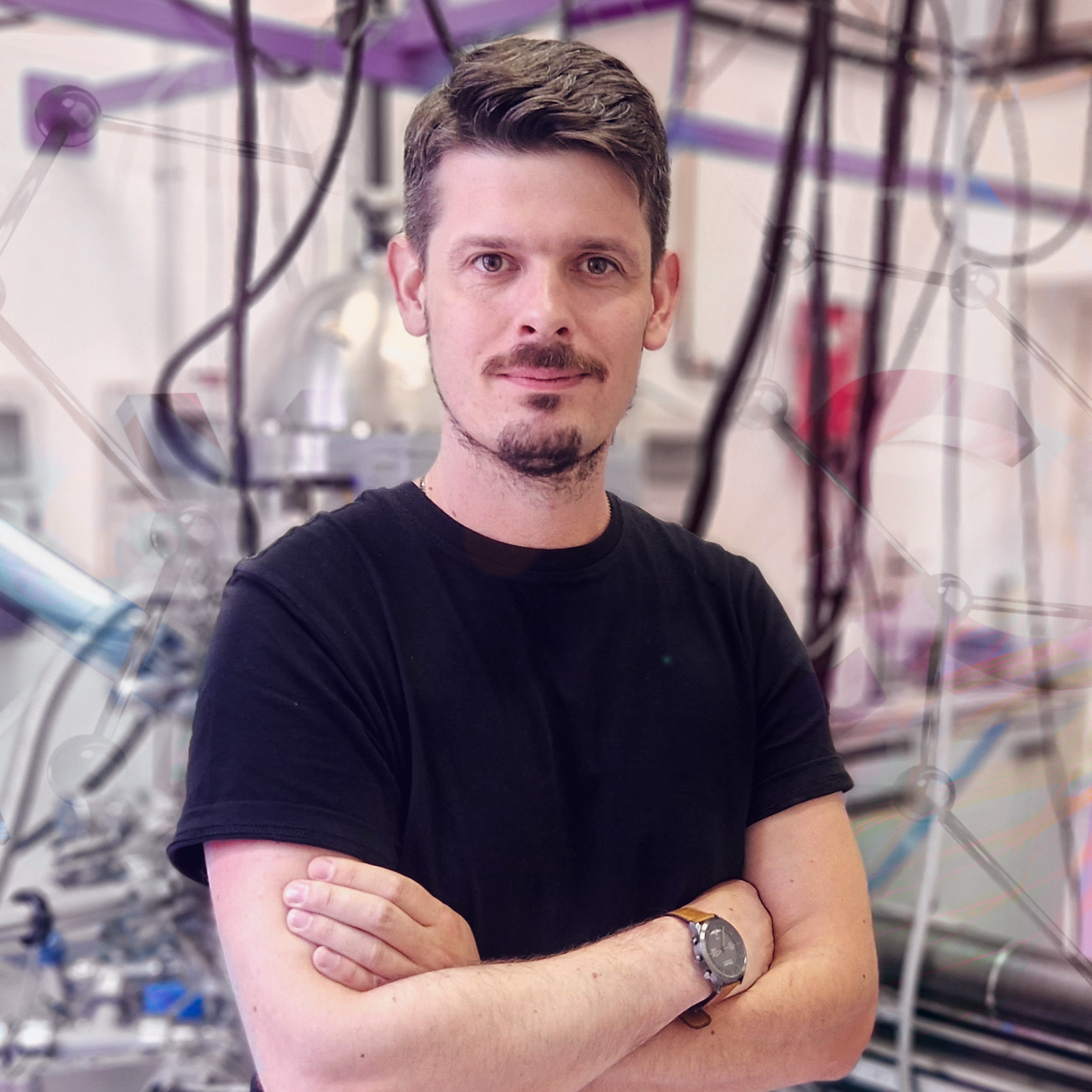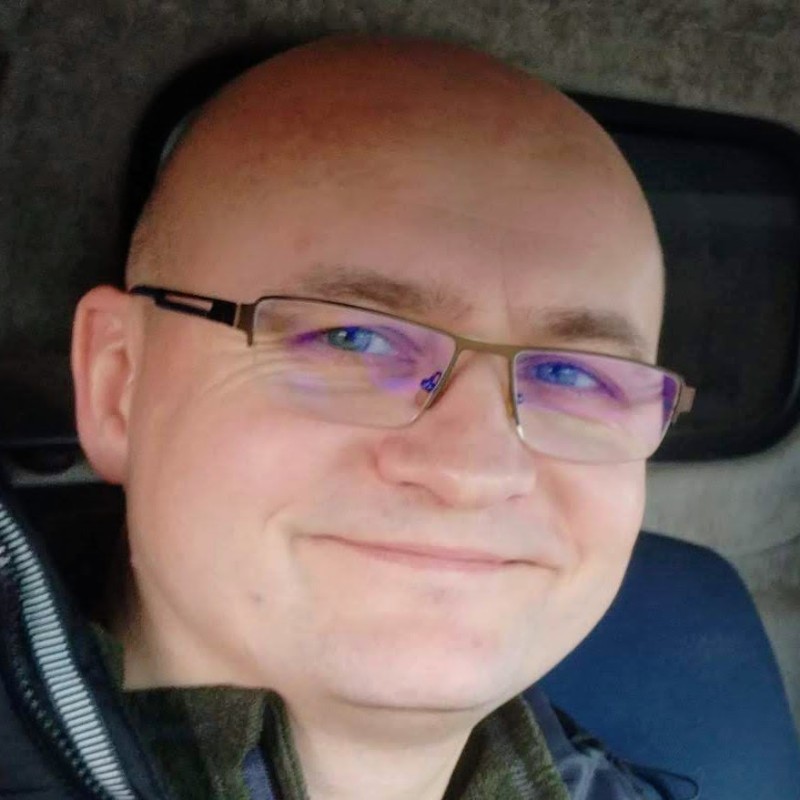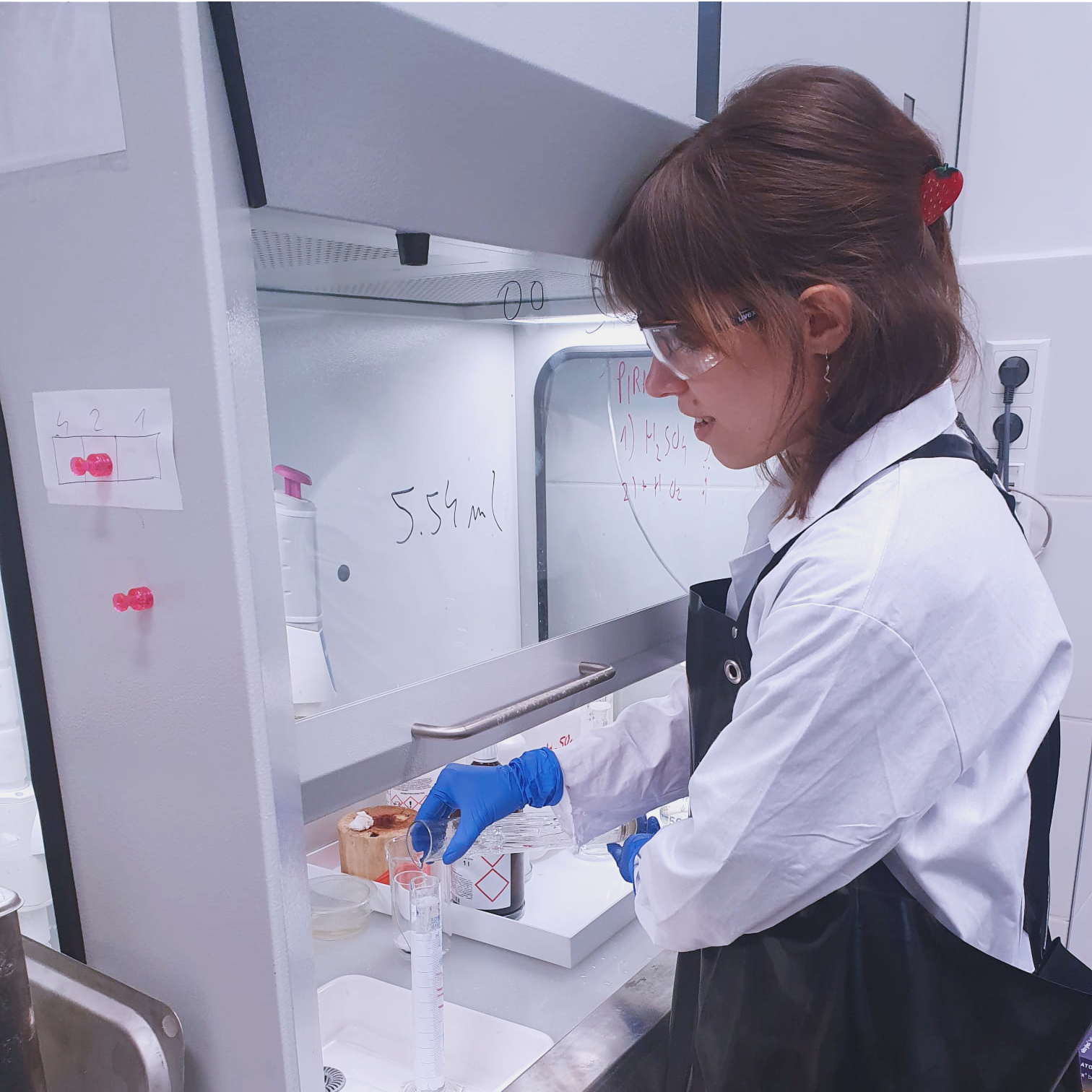
Tomasz Kosmala
Associate Professor
Tomasz Kosmala received his Master’s degree in 2011 from the Department of Physics and Astronomy at the University of Wrocław. In 2011 he moved to the University of Bonn (Germany), where he joined the Surface & Interface Science Group lead by Prof. K. Wandeltas as a research fellow. There, he began his PhD studies in 2012. In 2016, he received his PhD in chemistry with magna cum laude distinction for his thesis entitled “Characterisation of organic molecules at metal/electrolyte interfaces”.
Parallel to his PhD studies, he was professionally active in other research projects due to his expertise in the electrochemical scanning tunnelling microscopy and in the solid-liquid interface as well. In 2013 he moved to Tor Vergata University of Rome (Italy), where he joined the group of Prof. C. Goletti and studied model systems based on titanium dioxide applied for the production and storage of energy. In 2014-2020 he stayed at the University of Padova (Italy). The first year was held at the group of Prof. A. Gennaro as research fellow working on European project CathCat FCHJU-2011-1-303492, and then in the Surface Science and Catalysis Group (SSCG) of prof. Gaetano Granozzi. Within this stay, he participated in four research projects, i.e.: European project “CRESCENDO: Critical Raw material Electrocatalysts replacement Enabling Designed, pOst-2020 PEMFC” (H2020-JTI-FCH-2017-779366) and Bilateral Italy-China project “GINSENG: Graphene related INnovative 2D materials for Sustainable ENerGetIcs and catalysis” (PGR00953). As a brief summary, he continued to study model systems based on novel 2D and ultrathin oxide materials for electrocatalytic applications for energy storage and conversion.
In October 2020, he was employes as an assistant professor at the Faculty of Physics and Astronomy at the University of Wrocław, in the Institute of Experimental Physics. In 2022, he secured funding through the SONATA-17 competition (NCN) for the project titled “Atomic-scale Investigation Under In Operando Conditions of 2D Materials for Energy Storage and Conversion” (no. 2021/43/D/ST3/02873) with a budget of 1,775,600 PLN. In the same year, he was elected to the board of the Polish Vacuum Society and delivered invited plenary lectures at the 10th National Nanotechnology Conference (July 3-8, 2022, Kraków) and the Arqus Research Focus Forum on Smart Material & Surface Science (August 28-30, 2022, Granada, Spain). In 2023, he became a member of the editorial board of the journal Surfaces (ISSN: 2571-9637) and received awards for Outstanding Young Scientist (18th edition – Scholarship of the Minister of Science and Higher Education) and the Prof. W. H. Nernst Scientific Award (5th edition) for his scientific achievements. In April 2024, he was promoted to the position of associate professor at the University of Wrocław.
Tomasz Kosmala is a co-author of more than 30 peer reviewed articles in scientific journals such as Nature Catalysis, Joul, Advanced Energy Materials, ACS Energy Letters and ACS Catalysis etc., with a h-index of 20 and more than 1500 citations.

Radosław Wasielewski
Associate Professor
Dr. Radosław Wasielewski earned his Master of Engineering degree from the Faculty of Electronics at Wrocław University of Science and Technology in 2001, participating in research at the Laboratory of Near-Field Interactions under Prof. Teodor Gotszalka. His interest in nanoscale research led him to pursue a PhD at the University of Wrocław’s Faculty of Physics and Astronomy under Prof. Antoni Ciszewski. During his doctoral studies, he completed a year-long research internship with Prof. Teodor Madey at Rutgers University, which contributed to his 2010 dissertation on the physicochemical properties of ruthenium surfaces for extreme ultraviolet lithography.
He gained further experience through internships with Prof. Detlef Hommel at the University of Bremen (DAAD scholarship) and Prof. Vladimir Matolin at Charles University in Prague. Dr. Wasielewski also worked on industry projects, including an eight-month research project for NanoTech and an 18-month collaboration with the Wrocław Research Centre EIT+. In 2019, he conducted research on air purification for a Lower Silesian company.
Throughout his career, Dr. Wasielewski has used various material analysis and surface physicochemistry techniques (XPS, STM, AFM, TPD, ISS, EC-STM), many requiring vacuum conditions. From 2018 to 2022, he was a board member of the Polish Vacuum Society. He has expertise in measurement interfaces, data acquisition systems, and the construction of electronic and mechanical systems, and he supervises theses in physics, applied computer science, and measurement systems.
Dr. Wasielewski has participated in research using large-scale infrastructure (NSLS at Brookhaven National Laboratory; synchrotron in Trieste). He is a co-author of over 27 scientific publications in international journals (https://orcid.org/0000-0002-7014-5964), with over 374 citations and an h-index of 11 according to Google Scholar.

Rafał Lewandków
Assistant Professor
Dr. Rafał Lewandków earned his Master’s degree from the Faculty of Physics and Astronomy at the University of Wrocław in 2017. He continued his education with doctoral studies, completing them in 2023 with a dissertation titled „Growth and Morphology of Al2O3 and MgO Layers on SiC(0001) and GaN(0001) Surfaces,” supervised by Prof. Antoni Ciszewski. During his doctoral studies, he utilized various material analysis and surface physicochemistry techniques (XPS, STM, AFM, UPS, LEED).
In 2018, he led the research project „Investigation of Hafnium and Its Oxides Adsorption on Gallium Nitride Substrates Using X-ray and Ultraviolet Spectroscopy Methods” (UWr 0420/2711/18). His research primarily focuses on the creation and characterization of dielectric/semiconductor interfaces. In 2022, he collaborated with Dr. Miłosz Grodzicki on studies of NbN and Nb2O5 on GaN surfaces and participated in research on Mq3 structures (M – Al, Er, Ga) on GaN and SiC surfaces. He presented his findings at international conferences, including SEMPICS 2018 and the 49th International School & Conference on the Physics of Semiconductors in 2021.
During his second year of doctoral studies, he was employed as an Assistant at the Faculty of Physics and Astronomy, where he discovered a passion for programming. He participated in numerous training sessions and taught students. In 2021, he became a Lecturer at the Faculty, receiving the Rector’s Award for Outstanding Teaching Achievements in both 2021 and 2022.
From 2020 to 2022, he enhanced his knowledge as an analyst/programmer in the BM@N (Baryonic Matter at the Nuclotron) Collaboration, in cooperation with the Joint Institute for Nuclear Research in Dubna. He worked on the project „Searching for a QCD Mixed Phase at the Nuclotron-Based Ion Collider Facility,” preparing tables of equations of state (EoS) for the THESEUS code.
In 2024, Dr. Lewandków obtained the position of Assistant Professor. Since 2023, he has collaborated with Dr. Tomasz Kosmala on developing software for EC-STM data analysis. His current work includes using machine learning models for automatic classification of detected objects, neural networks (U-Net) for precise segmentation of EC-STM images, and time analysis and anomaly detection in EC-STM images. He is the co-author of 10 publications (https://orcid.org/0000-0001-9683-1084).

Paulina Wira
PhD student
Paulina Wira earned her Bachelor’s degree in Neurobiology in 2017 from the Jagiellonian University in Krakow and continued with a Master’s in Neurobiology. She was involved in research with the OPTOLAB group and contributed to a National Science Centre project on therapy mechanisms for substance abuse and stress-related disorders. She volunteered at the „Brain Awareness Week 2018” conference and participated in the 2018 IBRO Neuroscience Forum.
In 2022, she began her Master’s in Experimental Physics at the University of Wrocław and in October 2023, she started her master’s thesis under Dr. Tomasz Kosmala. Her thesis focuses on 2D molecular networks as single-atom catalyst models for the oxygen reduction reaction, using EC-STM. She is a scholarship recipient of an NCN Sonata grant for atomic-scale studies of 2D materials for energy storage and conversion.
In February 2024, she became an Independent Physicist at the University of Wrocław’s Institute of Experimental Physics. She won the „Young Researcher 2023-25” grant, funding her presentation at ICASS 2024 in China. She participated in the Surface Science Discussions 2024 conference and is on the organizing committee for IWSP-2024. She co-authored patent application no. P.448634 for an EC-STM tip isolation device. Paulina plans to continue her scientific career by applying to the Doctoral School at the University of Wrocław.

Anna Futyma
Master student – Technician Assistant
Anna Futyma holds a Bachelor’s degree in Analytical Chemistry from the University of Wrocław and a Master’s degree in Forensic Science from the University of Warsaw, specializing in forensic chemistry. Her education provided her with extensive knowledge in both classical and instrumental analytical methods, with a focus on spectroscopic and microscopic techniques, including HPLC, Raman spectroscopy, and electron microscopy.
In February 2024, she joined the Institute of Experimental Physics at the University of Wrocław as a Technical Assistant, where she continues to apply her skills and knowledge in a scientific laboratory setting.
Starting from October 2024, Anna will pursue her second Master’s degree in Experimental Physics, driven by her interest in the study of solid/liquid interfaces, focusing on the self-assembly and behavior of organic molecules at these interfaces. Recently, she presented her results at the Symposium on Microscopic Characterization of the Solid/Liquid Interface which took place in Sondalo (Italy) with the presentation titled „Elucidating the Surface Chemistry of TMPyP on Iodine-Modified Au(111) by EC-STM study”

Robert Kurczak
Master student
Robert Kurczak earned his Bachelor of Engineering degree in Applied Computer Science and Measurement Systems from the University of Wrocław in 2024, under the supervision of Dr. Radosław Wasielewski. That same year, he began his Master’s studies in Computational Physics at the University of Wrocław, where he continues to bridge his engineering mindset with data-driven approaches to physical systems.
He is a co-author of patent application no. P.448634 for an EC-STM tip isolation device — a result of his inventive approach to laboratory challenges. His initiative, technical expertise, and passion for continuous learning make him a valued member of the team, seamlessly combining engineering precision with scientific curiosity.
